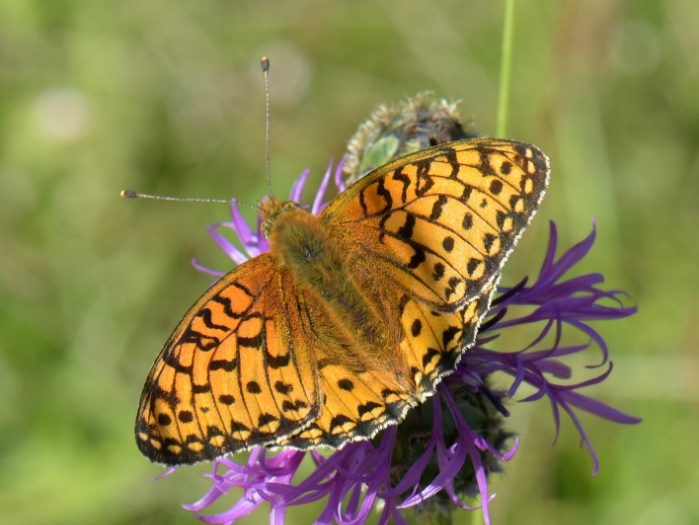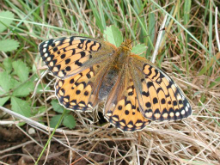
| Butterfly Conservation |
 |
| Hertfordshire & Middlesex Branch |
 |
|
|||
| Saving butterflies, moths and our environment | ||||


Dark Green FritillaryArgynnis aglajaRare but increasing Distribution and Status The Dark Green Fritillary is generally found only on chalk hillsides in our area. In the 1980s it was seen in many suitable areas on the western, northern and eastern edges of Hertfordshire but by the end of the 1990s the butterfly had disappeared almost completely in these areas too apart from a possible colony in the Tring area. However, since the beginning of this century there has been a partial recovery in Hertfordshire with the best spots at Hexton Chalk Pit, Aldbury Nowers and Therfield Heath. It is possible it is returning to Middlesex after several decades Habitat Requirements Chiefly on calcareous grassland Larval Foodplants Common Dog Violet Viola riviniana, and Hairy Violet V. hirta on the chalk Adult Food Sources Red Valerian Centranthus ruber, Thisles Cirsium sp., Buddleia Buddleja davidii Behaviour/Observation notes This species is a low-flying insect with males spending much time patrolling over the vegetation in search for females which are more inconspicuous. However, in early morning and evening, it is often found feeding on flowers like thistles and knapweeds to provide opportunities for good photographs although to photograph the undersides you may need to wait until the middle of the day when the temperature rises Life History The Dark Green Fritillary is on the wing from June to the end of July with a peak often in the first week of July. The eggs are laid on or near violets. After the larva emerges it eats the eggshell and immediately enters hibernation. On emergence in the spring the larvae eat the leaves. When fully grown it creates a tent, using the leaves and other vegetation, in which a pupa will be formed Further information
UK distribution map |
Copyright Butterfly Conservation © 2019 Hertfordshire & Middlesex Branch
Privacy and Copyright Statement and Cookie Policy Statement
Butterfly Conservation
Company limited by guarantee, registered in England (2206468)
Registered Office: Manor Yard, East Lulworth, Wareham, Dorset, BH20 5QP. Tel: 01929 400 209
Charity registered in England & Wales (254937) and in Scotland (SCO39268). VAT No. GB 991 2771 89